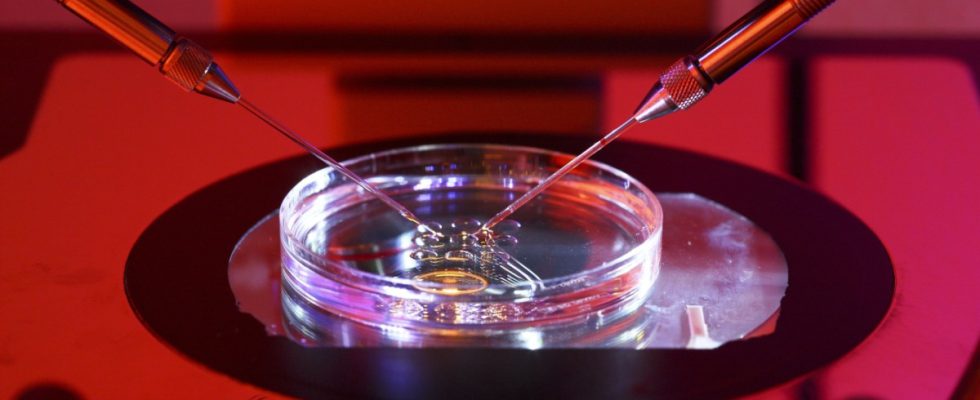A human-like structure, grown in the laboratory, without any egg cells or sperm: a team from Israel reports this research success. An “embryo model” has been created that is very similar to an approximately 14-day-old human embryo in the womb, the scientists at the Weizmann Institute in Israel write in a paper Article in the journal Nature. It grew without a uterus.
According to their own statements, the researchers used stem cells, which put them in a very early state – the so-called naive state; in this they are still able to develop into any form of cell. This stage corresponds to the seventh day of the natural embryo – at this time it nests in the uterus, the scientists explain. They treated some of the cells to form a placenta, a yolk sac, or the extraembryonic mesodermal membrane that ultimately forms the chorionic sac. These structures would have developed normally outside the uterus for eight days.
So far, it has been difficult to research the first few weeks of an embryo’s development – for ethical and technical reasons, according to one Message from the institute. The first month was “largely a black box,” the head of the team, Jacob Hanna, is quoted as saying. “Our stem cell-derived human embryo model offers an ethical and accessible way to look into that drawer.” It closely mimics the development of a real human embryo, particularly the emergence of its extremely delicate architecture.”

